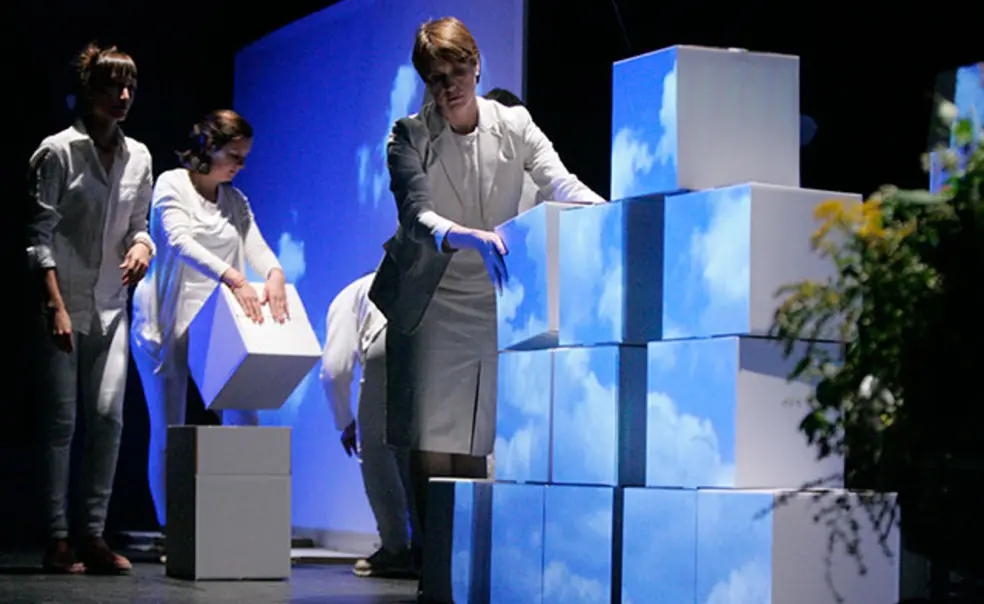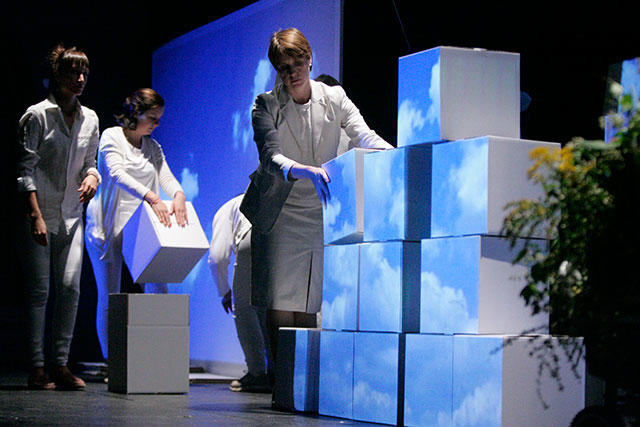White Sheets, Blue Skies Featured in Princeton University Art Museum 'Happening'
By Vivienne Chen ’14
Dressed in all-white outfits, 17 performers pulled the audience to participate in a one-time avant-garde show, “The Sky is the Limit: A Happening,” Oct. 10 at Hamilton Murray Theater. The installation, originally created by artist Geoffrey Hendricks in 1969, featured students and Princeton community members moving stacks of white cardboard boxes against a blue background. The show was meant to simulate the sounds, textures, and shapes of clouds, and was sponsored by the Princeton University Art Museum to promote its new exhibition, “New Jersey as a Non-Site.”
“This is probably the most alternative, outlandish art performance that has ever happened at Princeton,” said volunteer performer Emi Alexander ’14, the president of the student advisory board of the Art Museum. “It was a once in a lifetime opportunity to be a part of it.” During the show, performers tossed white beach balls into the crowd and wrapped a plant in toilet paper and shaving cream. Midway through, a white sheet blanketed the viewers’ heads.
Audience members were perplexed but entertained. “I like that it was interactive,” said Ronan O’Brien ’16, “but I got the impression I was missing context.”
“Over the past year we’ve been working to put together a re-performance of a happening,” said Monica Barra, a Mellon Graduate Research Fellow at the Art Museum. “But we wanted it to be different, since happenings were always temporally circumscribed.” A happening refers to a form of semi-improvisational performance art popular in the 1960s and ’70s, often performed by members of an arts group named Fluxus.
Hendricks was an early member of Fluxus, along with the likes of artists Alison Knowles, George Brecht, and Yoko Ono. His piece was chosen because students at Rutgers University first performed it and Barra felt the student connection was meaningful to Princeton.
The performance culminated with each audience member standing in the foyer of the Art Museum, opening a white box to find a white balloon and string connected to a photo of a deceased Fluxus member.
“This was a large part of the reimagining,” Barra explained as the balloons floated up to the ceiling. “These represent the saints and angels of Fluxus.”













No responses yet